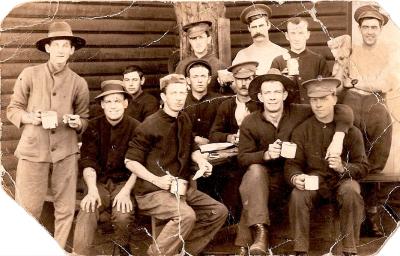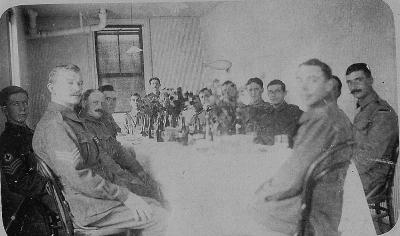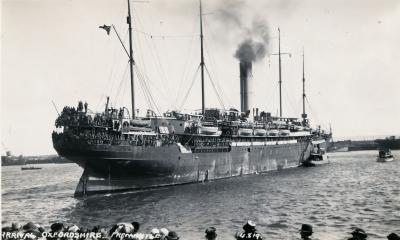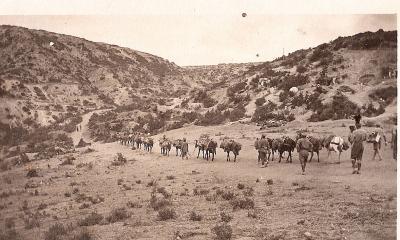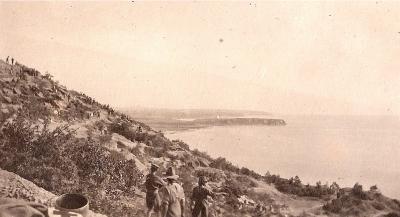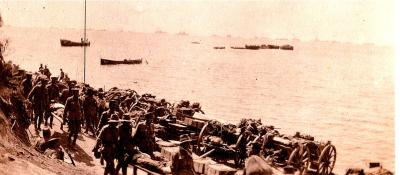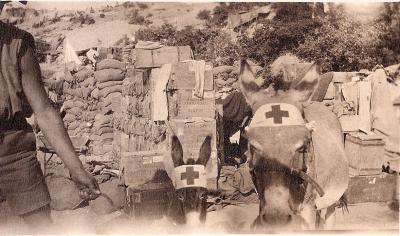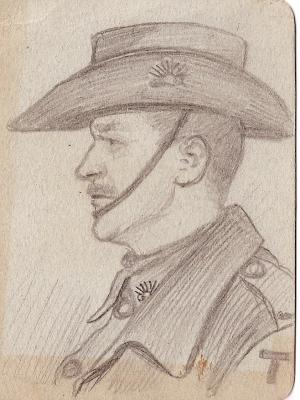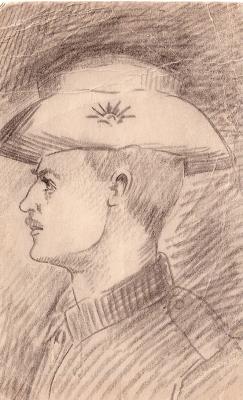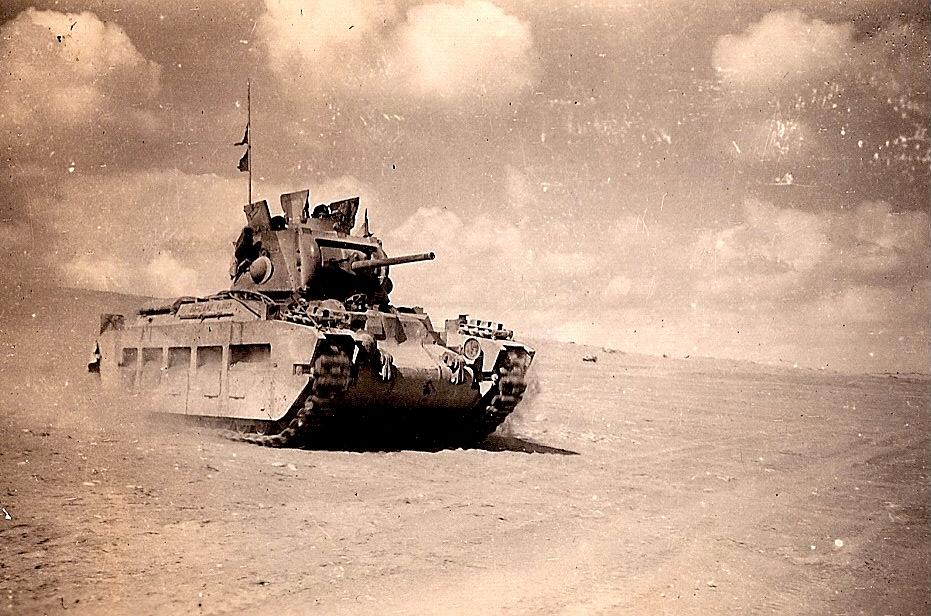World War 2, Middle East, 1942
1942View of British Matilda tank near El Alamein
The Infantry Tank Mark II, best known as the Matilda, was a British infantry tank of World War 2. The design began as the A12 specification in 1936, as a gun-armed counterpart to the first British infantry tank, the machine gun armed, two-man A11 Infantry Tank Mark I. The Mark I was abandoned in 1940, and from then on the A12 was almost always known simply as "the Matilda".
With its heavy armour, the Matilda II was an excellent infantry support tank but with somewhat limited speed and armament. It was the only British tank to serve from the start of the war to its end, although it is particularly associated with the North Africa Campaign. t was replaced in front-line service by the lighter and less costly Infantry Tank Mk III Valentine beginning in late 1941.
he Matilda filled an urgent need for a tank to operate in New Guinea. Approximately 140 tanks were provided by Britain in early 1942, and these vehicles subsequently proved suitable for jungle operations. In 1943, a flamethrower version was produced, known as the Frog. Frog's were used in Borneo by 2/1 Armoured Brigade. A bulldozer version was also developed.
Many of the tanks were fitted with a variety of battle-field modifications, including wire mesh over the engine covers, spare track links on the hull and/or pierced steel planking (PSP) which was normally used in the construction of aircraft runways. It was also a common practice to festoon the exterior of vehicles with additional stores and personal items of equipment. With their war service completed, Matilda's were relegated to a training role and were in service until 1955, when they were finally retired.
Details
Details
Australian Army Museum of Western Australia
Australian Army Museum of Western Australia
Other items from Australian Army Museum of Western Australia
- World War 1, Australia Western Australia Blackboy Hill, CLARKE, Australian Army Medical Corps, 1916
- World War 1, Europe, Australian Army Medical Corps, 1917
- World War 1, Australia Western Australia Blackboy Hill, Australian Army Medical Corps, 1916
- World War 1, Europe, 1917
- Australia, Western Australia, Fremantle, HMT Oxfordshire, 10 Light Horse,1919
- World War 1, Europe, Türkiye, Gallipoli, Anzac Cove, 1915
- World War 1, Europe, Türkiye, Gallipoli, Anzac Cove, 1915
- World War 1, Europe, Türkiye. Gallipoli, Anzac Cove, 1915
- World War 1, Europe, Türkiye, Gallipoli, 1915
- World War 1, Europe, Türkiye, Gallipoli, Anzac Cove, 1915
- World War 1, Europe, 1917
- World War 1, Europe, 1917
